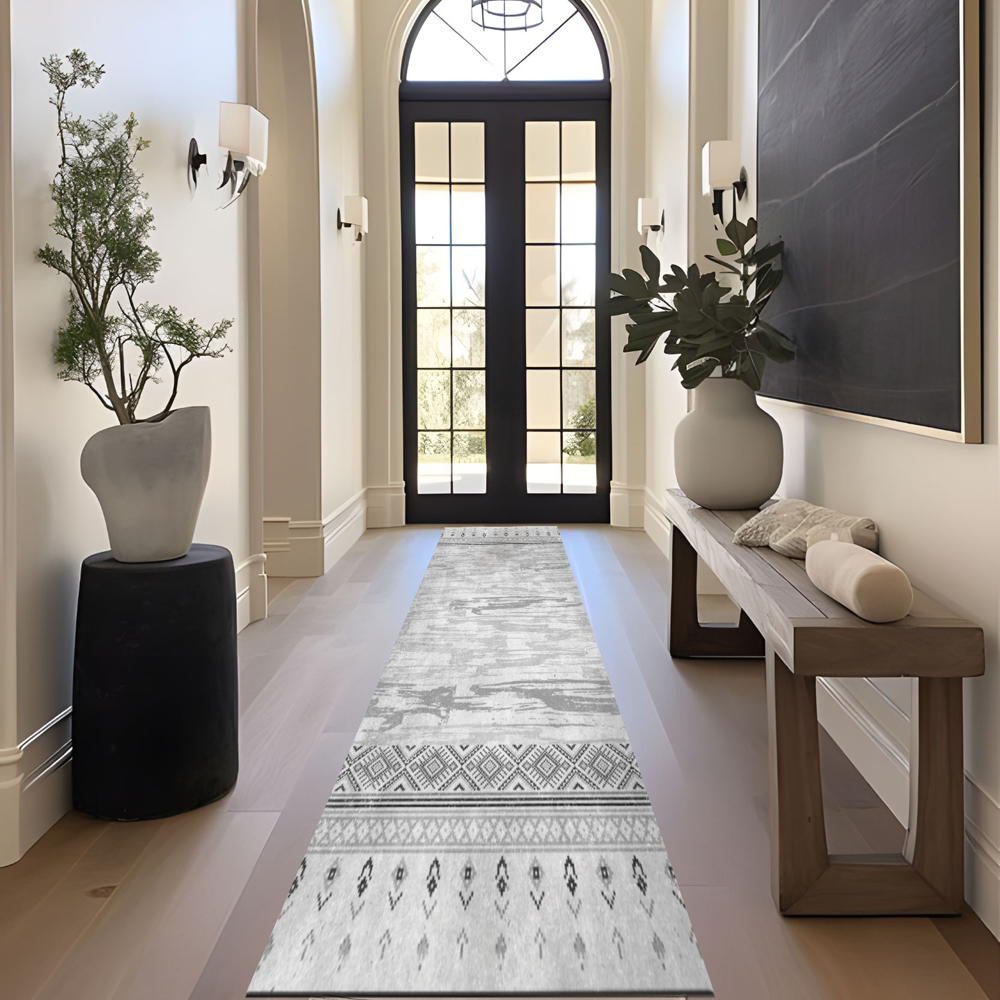 2025.09.17
2025.09.17
 Industry News
Industry News
Carpet manufacturing has seen incredible advancements over the past few decades, but few have been as revolutionary as the advent of printing carpet. This process has transformed a formerly limited industry, offering unparalleled design flexibility and efficiency.
At its core, printing carpet is a technique that applies dye directly to the surface of a finished or unfinished carpet. Unlike traditional weaving or tufting methods, where the color and pattern are integrated into the fiber structure, printing is a post-production process. This allows for a level of detail and a spectrum of colors that were previously impossible to achieve with woven or solution-dyed carpets.
The process typically involves a massive, high-speed printer—similar in concept to an inkjet printer but on an industrial scale. The carpet, often a neutral base color, is fed through the machine where a series of print heads spray thousands of tiny droplets of dye onto the surface. The dyes are then heat-set, ensuring they penetrate the fibers and become permanent.
While rotary screen printing has been around for some time, the true game-changer has been the rise of digital printing carpet. Digital technology allows for the creation of intricate, photorealistic patterns without the need for expensive and time-consuming physical screens. This has made custom designs more accessible and has significantly reduced lead times for production.
Designers can now create complex gradients, subtle textures, and even imitate natural materials like stone or wood with remarkable accuracy. This has opened up new markets in hospitality, retail, and commercial spaces, where a unique and branded aesthetic is a key differentiator. The ability to create a custom carpet for a hotel lobby with a specific logo or a bespoke pattern for a retail store has become a standard offering thanks to this technology.

Design Flexibility: The most significant benefit of printing carpet is the limitless design potential. From abstract art and photographic imagery to complex geometric patterns and custom logos, if you can design it on a computer, you can print it on a carpet.
Cost-Effectiveness: For complex or multi-colored designs, printing is often more economical than traditional weaving or tufting methods. There's no need for expensive looms or the setup of multiple yarn colors, which makes it an excellent option for short runs or custom projects.
Speed and Efficiency: Digital printing significantly reduces the time from design concept to final product. Without the need to create physical patterns or screens, the production process is streamlined, allowing for faster turnaround times.
Less Waste: The process is more efficient with materials, as dyes are applied precisely where they are needed, reducing waste compared to other coloring methods.
The future of printing carpet is bright. As technology continues to advance, we can expect even higher resolution printing, a wider range of available dyes, and more sustainable production methods. Research is already underway to develop printers that can apply textures or even 3D effects, pushing the boundaries of what is possible.
As architects, interior designers, and brands continue to seek unique and personalized solutions, printing carpet will remain at the forefront of innovation, solidifying its place as a cornerstone of the modern flooring industry.